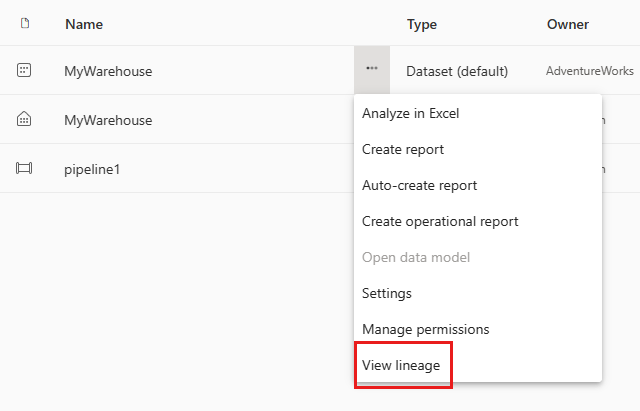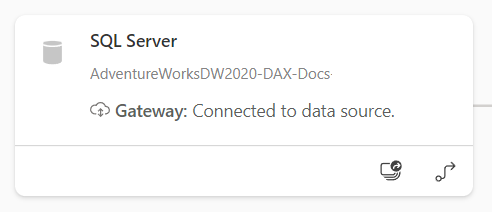Events
Mar 31, 11 PM - Apr 2, 11 PM
The ultimate Microsoft Fabric, Power BI, SQL, and AI community-led event. March 31 to April 2, 2025.
Register todayThis browser is no longer supported.
Upgrade to Microsoft Edge to take advantage of the latest features, security updates, and technical support.
In modern business intelligence (BI) projects, understanding the flow of data from the data source to its destination can be a challenge. The challenge is even bigger if you've built advanced analytical projects spanning multiple data sources, data items, and dependencies. Questions like "What happens if I change this data?" or "Why isn't this report up to date?" can be hard to answer. They might require a team of experts or deep investigation to understand. Fabric's lineage view helps you answer these questions.
In lineage view, you see the lineage relationships between all the items in a workspace, as well as data sources external to the workspace one-step upstream.
Every workspace automatically has a lineage view.
Note
Lineage in Fabric is in preview, and not all connections between items are fully supported yet. It is possible that the lineage between some items will be incorrectly shown.
Any user with a role in a workspace can access that workspace's lineage view. However, users with the Viewer role won't see data sources.
Lineage is accessible from multiple locations. Typically, you can get to it
From the workspace toolbar

From an item's option menu (for instance, in the OneLake data hub)

From the menu items at the top of the item's details page

When you open lineage view on an item, you'll see the connections between all the items in the workspace the item is located in.
Lineage view displays:
Downstream items in different workspaces aren't shown. To explore an item's downstream connections outside the workspace, open the item's impact analysis.
Items are represented by cards that provide some information about the item.

Data sources
You see the data sources from which the semantic models and dataflows get their data. On the data source cards, you see information that can help identify the source. For example, for Azure SQL server, you also see the database name.

To highlight the lineage for a specific item, select the arrow at the bottom right corner of the card.
Fabric highlights all the items related to that item, and dims the rest.
Lineage view is an interactive canvas. You can use the mouse and touchpad to navigate in the canvas, as well as to zoom in or out.
To zoom in and out, use either the menu in the bottom-right corner or your mouse or touchpad.
To have more room for the graph itself, use the full screen option at the bottom-right corner.

Events
Mar 31, 11 PM - Apr 2, 11 PM
The ultimate Microsoft Fabric, Power BI, SQL, and AI community-led event. March 31 to April 2, 2025.
Register todayTraining
Module
Link your Dataverse environment to Microsoft Fabric - Training
Learn how to link your Dataverse environment to Microsoft Fabric.
Certification
Microsoft Certified: Fabric Analytics Engineer Associate - Certifications
As a Fabric analytics engineer associate, you should have subject matter expertise in designing, creating, and deploying enterprise-scale data analytics solutions.